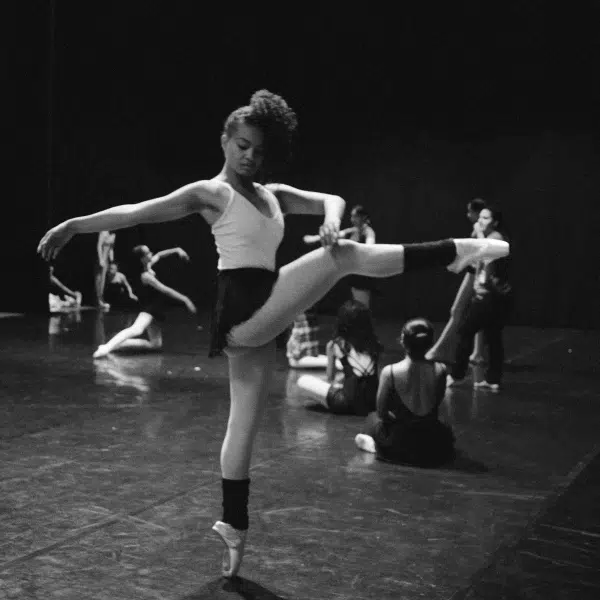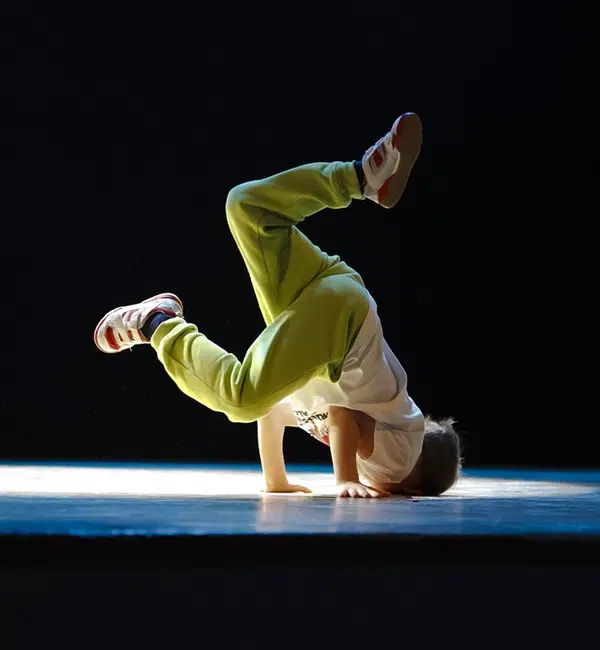Dancers are prone to muscle fatigue and leg injuries due to the long hours of hustle they endure during rehearsals and performances. They often push their bodies to long, persistent, and perpetual hours of physical activity.
Therefore, dancing can be as taxing and demanding to the body as other athletic sports such as tennis, badminton, swimming, or football.
However, in cases where your legs are easily prone to injuries, muscle fatigue, or leg cramps, compression socks are always there to the rescue.
Compression socks for dancers serve as a bonus to those who are active dancers. They can help relieve the pain, discomfort, soreness, and muscle fatigue faced by dancers after long hours of hustle spent on their feet. Thus, compression socks have figured their way out in the dance community, with expertise in speedy recovery and amplified performance.
This article mainly aims at the association between compression socks and their impacts on dancers.
Are Compression Socks Good for Dancers?

Dancers spend a hard time on the soles during their endurant rehearsals and performances. They stress their ankles and feet to the extent that they are excessively prone to cramps, injuries, fatigue, and soreness.
However, compression socks for dancers are always a strong choice to get rid of those annoying foot sores and leg injuries. Not only this, but the gentle pressure they provide is a key to enhanced blood circulation, which plays a significant role in the prevention of swelling, fatigue, and muscle cramps in the legs.
Therefore, compression socks can be effectively beneficial for dancers and their performances, offering multiple benefits ranging from enhanced performances to spontaneous recovery. So, let’s have a look at the various benefits of compression socks for dancers.
Benefits of Wearing Compression Socks for Dancers
Dancers can benefit themselves by wearing compression socks for their boost performances and speedy recovery. They serve several benefits, and some of them are the following:

Enhanced Stamina and Enduring Performance
Compression socks are especially known to boost blood flow in the legs. Not only this, but they also improve venous blood flow to the heart and prevent the pooling of blood in the legs.
Preventing the blood from pooling in the legs can help reduce muscle fatigue and soreness within the legs, which play a leading role in the enhancement of stamina and boosting the dancer’s performance.
Therefore, compression socks are highly profitable in enhancing the dancer’s endurance and performance.
Prevention of Leg and Foot Injuries Due to Better Support
The graduated compression provided by compression socks plays an efficient role in reducing swelling and muscle pain within the legs. They also provide targeted ankle support and better hold to the heels through their reinforcing properties.
Therefore, compression socks also help to prevent leg and foot injuries in the dancers.
Promotion of Joints Alignment
The pressure provided by the compression sock promotes joint alignments by keeping them stable and in place during rehearsals and performances. Their extra support is a bonus point to the joint’s stability.
Besides, the compressive pressure also keeps the muscles and tendons aligned in their place, promoting joint alignment.
Additional Arch Support and Joint Stability for Dancer’s Feet
The pressure adjustment of compression socks makes them tight around the toes and ankles. This property of compression socks makes them perfect to provide additional arch support and joint stability for the dancer’s feet.
Thermoregulation Control during Warm-Ups
Warming up before actual rehearsals requires a balance between the thermoregulation system of the body. Compression gear, specifically socks, provides a warming effect on the legs due to their pressure generation.
In this way, they keep a perfect balance between the thermoregulation system of the body during warm-ups.
Enhanced Comfort and Durability
The breathable fabric and moisture-wicking properties of compression socks are excellent tools for enhanced support and durability during dancing performances.
Speedy Recovery
Compression socks reduce swelling and inflammation in the legs after performances. Not only this, but the improved circulation, efficient nutrient supply, and enhanced oxygenation of the muscles and tissues in the legs are also offered by the compressive properties of these socks.
In this way, they are well known for their speedy recovery after enduring performances.
How to Choose the Right Compression Socks for Dancers?

Being a dancer, choosing the right pair of compression socks is essential to take advantage of their benefits.
You have to consider several different qualities of compression socks, according to your specific needs, which make them a perfect fit for dancers and their comfortable feet.
- Moderate level of compression ranging from 15-20mmHg is considered to be the best choice for dancers to enhance their performance and prevent muscle fatigue during dancing
- For post-performance recovery, wear a firm level of compression ranging from 20-30mmHg to recover from swelling and muscle soreness after dancing
- Graduated compression for enhanced blood circulation
- Breathable and moisture-wicking fabric like spandex or nylon to get rid of athlete’s foot, which is associated with excessive sweating of the feet
- Comfortable anatomical fit to get rid of foot sores
- Ensure a snug fit
- Cushioned soles for long-term wear
- Seamless construction to prevent blisters
- Reinforced heels and toes to prevent wear and tear injuries
However, it is always best to consult your healthcare professionals to avail the maximum benefits of the best compression socks.
Recommendations for Different Dance Styles
While choosing compression socks, you need to consider the specific needs of your dance style. Keeping this in mind, here we are coming up with some tailored recommendations for various types of dance:
Ballet

Ballet dancers need compression socks that offer flexibility and targeted support, particularly for the ankles and calves. Since ballet involves a lot of pointe work and delicate movements, it’s important to have socks that provide stability without restricting motion. While wearing pointe shoes, compression socks can help reduce discomfort and provide additional support.
Key features to look for:
- Graduated compression for consistent support
- Lightweight and breathable materials to keep feet cool
- Extra cushioning in the toes and heels to protect from pressure points, especially when wearing pointe shoes
- Seamless design to prevent blisters and chafing
- Consider open-toe compression socks to wear with ballet shoes
Contemporary

Contemporary dance involves a mix of floor work, fluid movements, and dynamic changes in pace and direction. Compression socks for contemporary dancers should provide a balance of support and flexibility to complement the dancer’s body.
Key features to look for:
- Moderate compression to support the calves and feet
- Reinforced footbed for extra cushioning during floor work
- Breathable and moisture-wicking materials to keep feet dry
- Flexible and durable construction to withstand intense movements
Hip-Hop

Hip-hop dance is high-energy and involves a lot of jumps, spins, and quick movements. Compression socks for hip-hop dancers should offer strong support and cushioning to protect the feet and legs from impact and joule shock.
Key features to look for:
- Firm compression to support the ankles and calves
- Reinforced heels and toes for shock absorption
- Moisture-wicking and breathable materials to keep feet cool
- Durable construction to handle rigorous use
Jazz and Tap

Jazz and tap dance require quick, precise footwork and strong leg muscles. Compression socks for these styles should support the calves and ankles while allowing for a full range of motion. Dancers often wear ballet shoes or a street shoe size that matches their dance shoes for optimal performance.
Key features to look for:
- Graduated compression to support circulation and reduce muscle fatigue
- Lightweight and breathable fabric for comfort
- Reinforced footbed and arch support to handle repetitive movements
- Seamless design to prevent irritation
When and How Long to Wear Dancer Compression Socks?

For effective results, it is essential to know the exact usage of compression socks. So, let’s discuss when and how long to wear compression socks.
- During long practice sessions and rehearsals to reduce fatigue
- During enduring performances to maintain muscle support and stability
- Immediately after the performance for post-performance recovery
Besides, you should consider wearing compression garments during long trips or prolonged sitting and standing periods.
FAQs
Q1. What athletes prefer wearing compression garments?
Athletes who are exposed to enduring exercises and training, such as runners, cyclists, swimmers, basketball players, dancers, football players, triathletes, weightlifters, and other gymnasts, should regularly wear compression socks.
Q2. Do compression socks help with dancing?
Yes! Compression socks effectively help with dancing. They help in enhanced performance and speedy recovery through improved blood circulation, reduced muscle fatigue and soreness, reduced swelling, and decreased risks of injuries through their additional support.
Q3. How do I know if I need compression socks?
If you are experiencing muscle fatigue, swelling, and leg cramps after vigorous exercises or activities, you should try wearing compression socks. They can be effective in providing relief in any such situation.
Q4. When not to wear compression socks?
You should not wear compression socks in certain medical conditions such as arterial diseases, dermatitis, open wounds, allergic infections, dehydration, or post-surgical conditions.
Q5. What do dancers wear for compression socks?
Dancers usually wear thigh-high or knee-high level compression socks with moisture-wicking properties and breathable fabric.
Q6. How does pressure graduation of compression socks help to get rid of leg cramps and foot sores in dancers?
The graduated compression of the compression socks provides variable degrees of compression at different points of the feet.
They provide the highest degree of compression at the feet and ankles, which decreases as they move upward to the knee. This pressure graduation makes it possible to enhance and improve the blood flow back and forth to the heart from the legs.
In this way, enhanced blood circulation makes the legs of the dancers less prone to injuries like muscle cramps or foot sores.
The Bottom Line
Dancing requires comfortable feet and vibrant stamina for better performance and enduring results. However, if you experience muscle sores or fatigue after your performances or rehearsals, don’t worry—compression socks never disappoint.
Compression socks for dancers play a great role in improving the performer’s execution through their brilliant performance-enhancing properties and speedy recovery.
They do so by improving blood circulation, reducing muscle fatigue, muscle cramps, and muscle sores, controlling thermoregulation, preventing blood pooling and clotting within the legs, and lowering the risks of injuries during dance practices.
However, we always recommend to consult with your healthcare provider for effective results.



